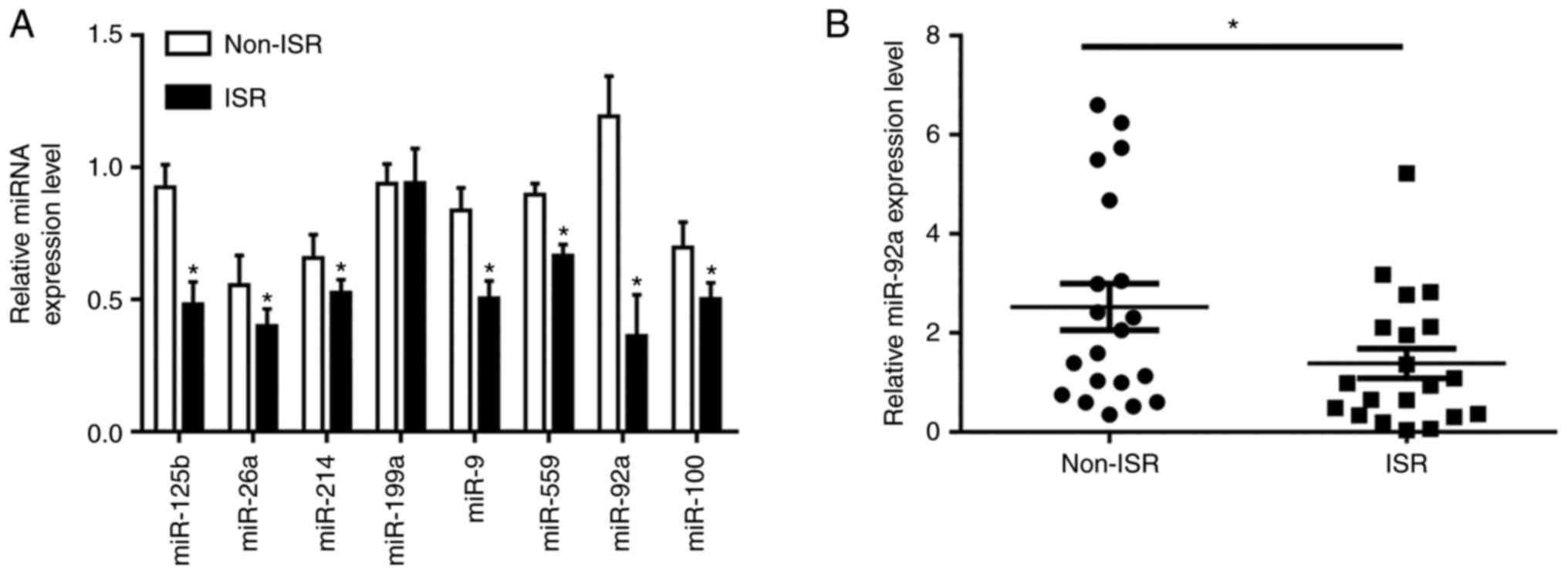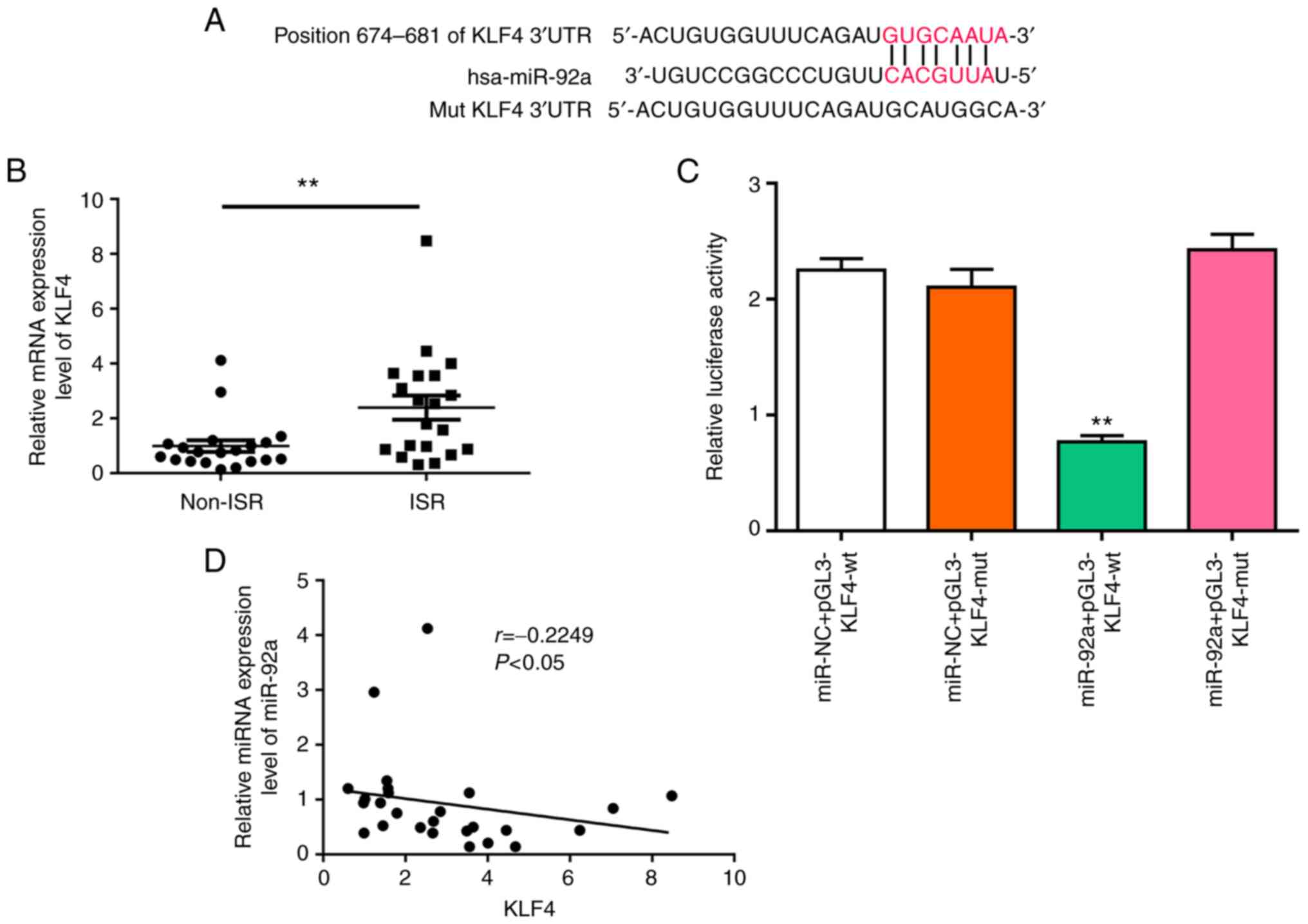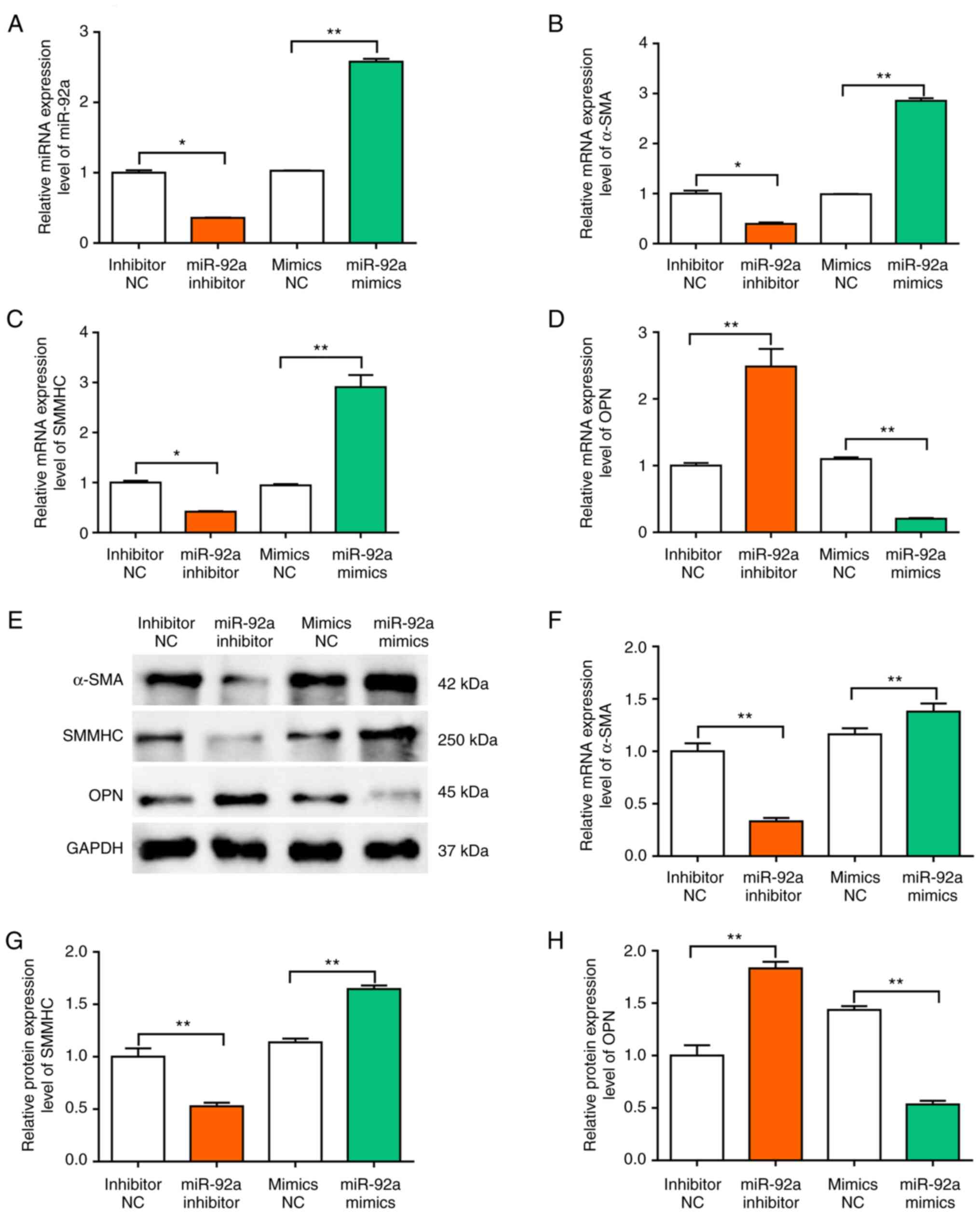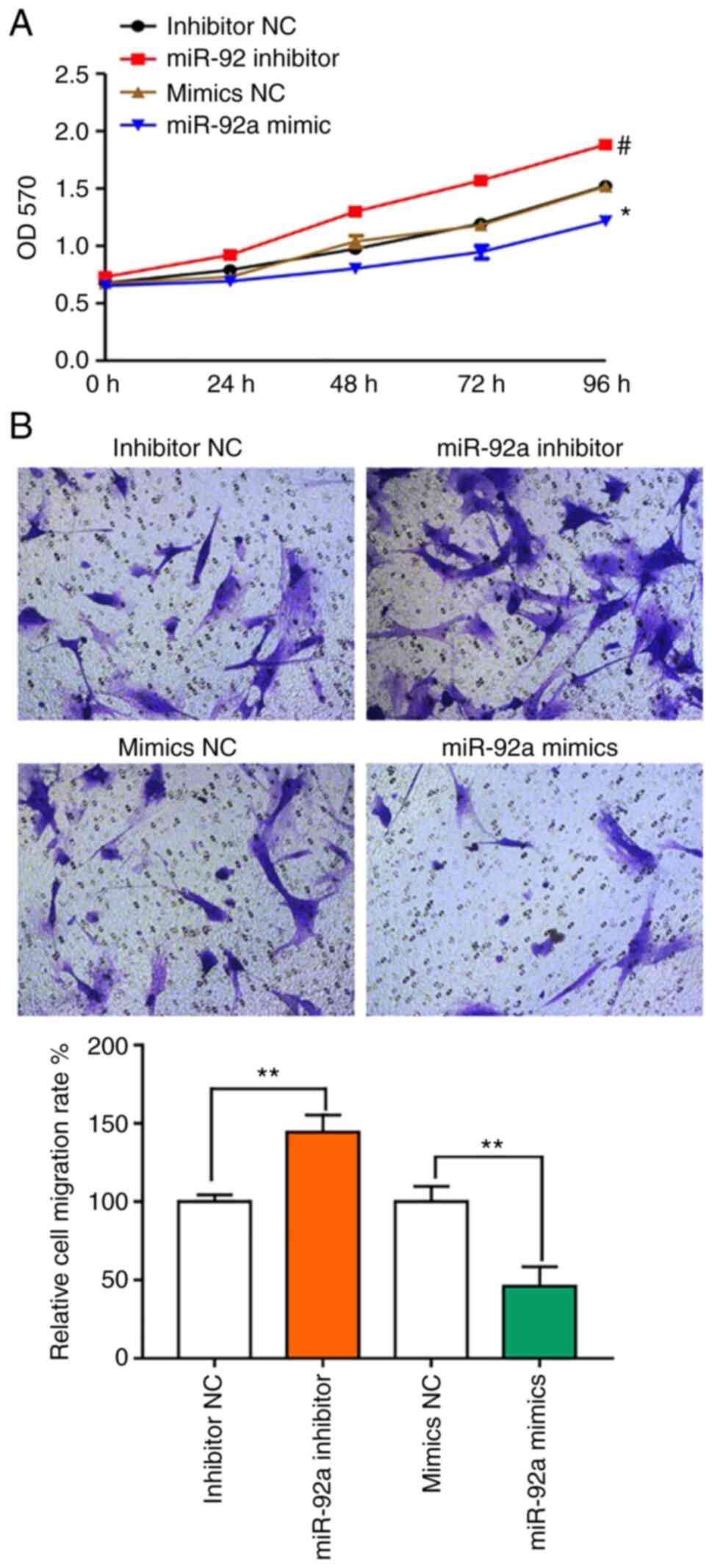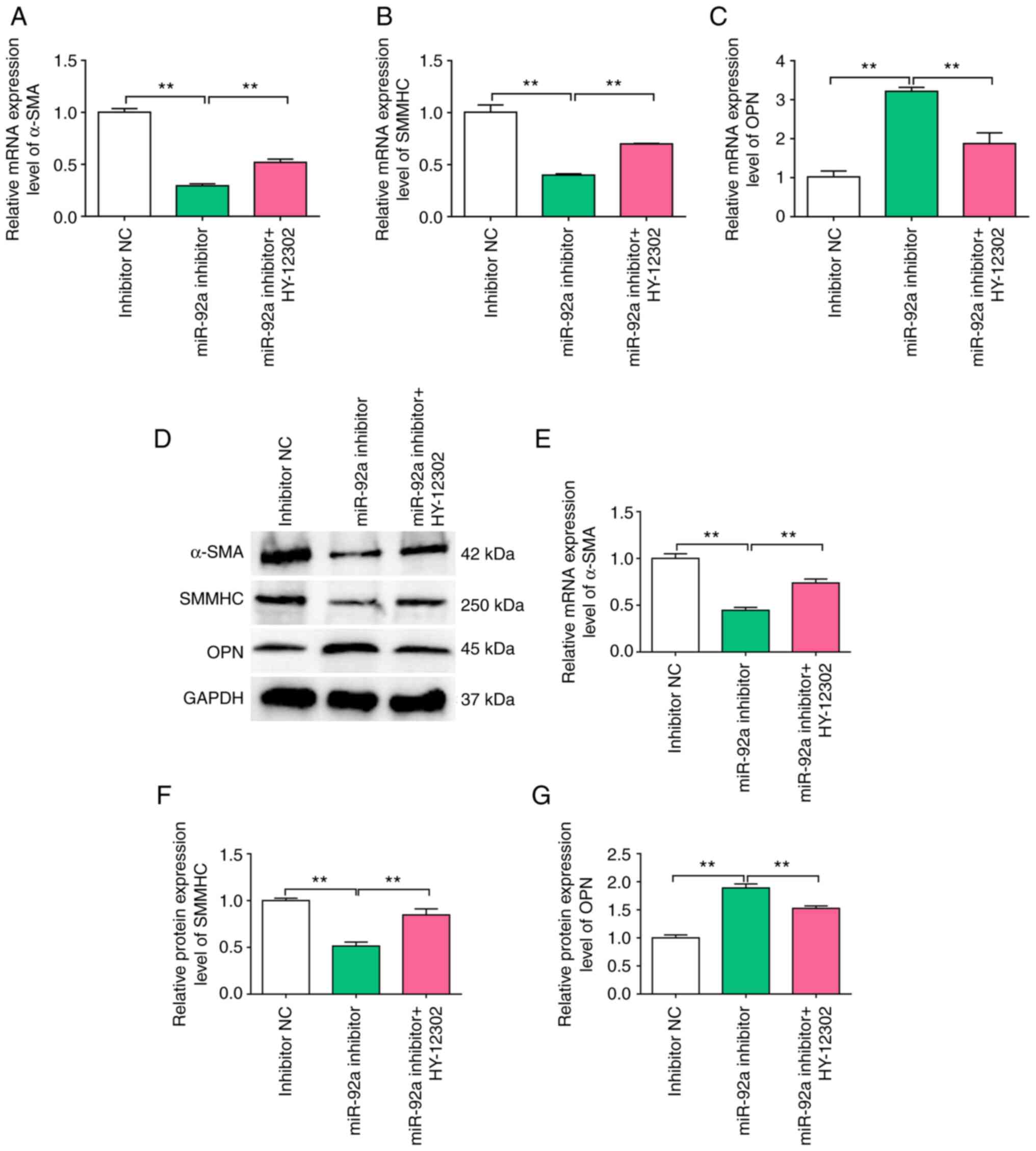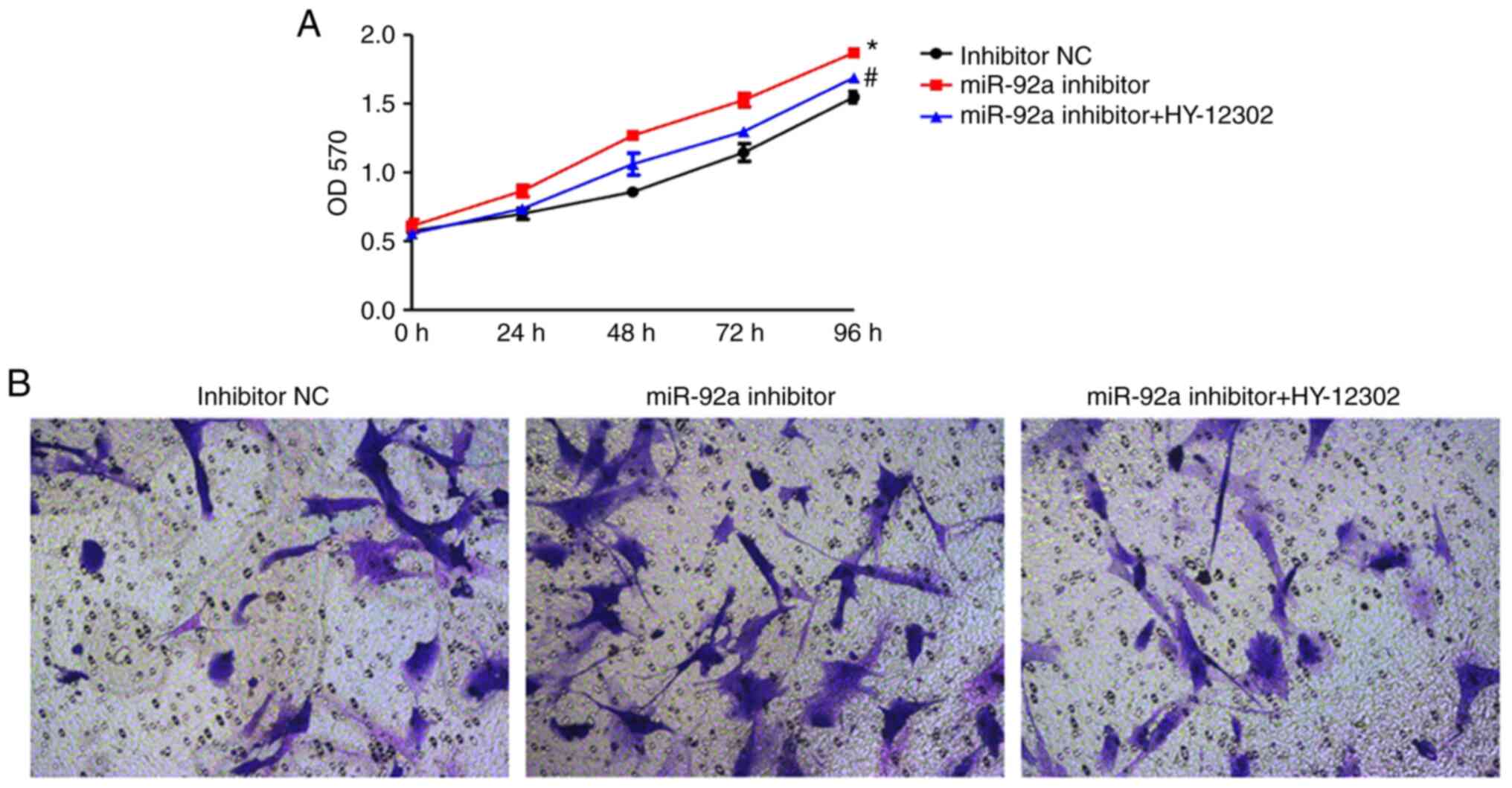|
1
|
Malakar AK, Choudhury D, Halder B, Paul P,
Uddin A and Chakraborty S: A review on coronary artery disease, its
risk factors, and therapeutics. J Cell Physiol. 234:16812–16823.
2019. View Article : Google Scholar : PubMed/NCBI
|
|
2
|
Faroux L, Guimaraes L, Wintzer-Wehekind J,
Junquera L, Ferreira-Neto AN, Del Val D, Muntané-Carol G, Mohammadi
S, Paradis JM and Rodés-Cabau J: Coronary artery disease and
transcatheter aortic valve replacement: JACC state-of-the-art
review. J Am Coll Cardiol. 74:362–372. 2019. View Article : Google Scholar : PubMed/NCBI
|
|
3
|
Al-Lamee RK, Nowbar AN and Francis DP:
Percutaneous coronary intervention for stable coronary artery
disease. Heart. 105:11–19. 2019. View Article : Google Scholar : PubMed/NCBI
|
|
4
|
Davis AA and Patel VG: The role of PD-L1
expression as a predictive biomarker: An analysis of all US food
and drug administration (FDA) approvals of immune checkpoint
inhibitors. J Immunother Cancer. 7:2782019. View Article : Google Scholar : PubMed/NCBI
|
|
5
|
Ali RM, Abdul Kader MASK, Wan Ahmad WA,
Ong TK, Liew HB, Omar AF, Mahmood Zuhdi AS, Nuruddin AA, Schnorr B
and Scheller B: Treatment of coronary drug-eluting stent restenosis
by a sirolimus- or paclitaxel-coated balloon. JACC Cardiovasc
Interv. 12:558–566. 2019. View Article : Google Scholar : PubMed/NCBI
|
|
6
|
Lansky A, Grubman D and Scheller B:
Paclitaxel-coated balloons: A safe alternative to drug-eluting
stents for coronary in-stent restenosis. Eur Heart J. 41:3729–3731.
2020. View Article : Google Scholar : PubMed/NCBI
|
|
7
|
Ullrich H, Olschewski M, Münzel T and Gori
T: Coronary in-stent restenosis: Predictors and treatment. Dtsch
Arztebl Int. 118:637–644. 2021.PubMed/NCBI
|
|
8
|
Huynh DTN and Heo KS: Role of
mitochondrial dynamics and mitophagy of vascular smooth muscle cell
proliferation and migration in progression of atherosclerosis. Arch
Pharm Res. 44:1051–1061. 2021. View Article : Google Scholar : PubMed/NCBI
|
|
9
|
Majesky MW: Vascular development.
Arterioscler Thromb Vasc Biol. 38:e17–e24. 2018. View Article : Google Scholar : PubMed/NCBI
|
|
10
|
Touyz RM, Alves-Lopes R, Rios FJ, Camargo
LL, Anagnostopoulou A, Arner A and Montezano AC: Vascular smooth
muscle contraction in hypertension. Cardiovasc Res. 114:529–539.
2018. View Article : Google Scholar : PubMed/NCBI
|
|
11
|
Wang Y, Nanda V, Direnzo D, Ye J, Xiao S,
Kojima Y, Howe KL, Jarr KU, Flores AM, Tsantilas P, et al: Clonally
expanding smooth muscle cells promote atherosclerosis by escaping
efferocytosis and activating the complement cascade. Proc Natl Acad
Sci USA. 117:15818–15826. 2020. View Article : Google Scholar : PubMed/NCBI
|
|
12
|
Chen MF: The role of calmodulin and
calmodulin-dependent protein kinases in the pathogenesis of
atherosclerosis. Tzu Chi Med J. 34:160–168. 2021. View Article : Google Scholar : PubMed/NCBI
|
|
13
|
Fan Y, Lu H, Liang W, Hu W, Zhang J and
Chen YE: Krüppel-like factors and vascular wall homeostasis. J Mol
Cell Biol. 9:352–363. 2017. View Article : Google Scholar : PubMed/NCBI
|
|
14
|
Wang H, Xu H, Lyu W, Xu Q, Fan S, Chen H,
Wang D, Chen J and Dai J: KLF4 regulates TERT expression in
alveolar epithelial cells in pulmonary fibrosis. Cell Death Dis.
13:4352022. View Article : Google Scholar : PubMed/NCBI
|
|
15
|
Rane MJ, Zhao Y and Cai L: Krϋppel-like
factors (KLFs) in renal physiology and disease. EBioMedicine.
40:743–750. 2019. View Article : Google Scholar : PubMed/NCBI
|
|
16
|
Li YZ, Wen L, Wei X, Wang QR, Xu LW, Zhang
HM and Liu WC: Inhibition of miR-7 promotes angiogenesis in human
umbilical vein endothelial cells by upregulating VEGF via KLF4.
Oncol Rep. 36:1569–1575. 2016. View Article : Google Scholar : PubMed/NCBI
|
|
17
|
Du M, Espinosa-Diez C, Liu M, Ahmed IA,
Mahan S, Wei J, Handen AL, Chan SY and Gomez D: miRNA/mRNA
co-profiling identifies the miR-200 family as a central regulator
of SMC quiescence. iScience. 25:1041692022. View Article : Google Scholar : PubMed/NCBI
|
|
18
|
Sand M, Hessam S, Amur S, Skrygan M,
Bromba M, Stockfleth E, Gambichler T and Bechara FG: Expression of
oncogenic miR-17-92 and tumor suppressive miR-143-145 clusters in
basal cell carcinoma and cutaneous squamous cell carcinoma. J
Dermatol Sci. 86:142–148. 2017. View Article : Google Scholar : PubMed/NCBI
|
|
19
|
Zhang L, Zhou M, Wang Y, Huang W, Qin G,
Weintraub NL and Tang Y: miR-92a inhibits vascular smooth muscle
cell apoptosis: Role of the MKK4-JNK pathway. Apoptosis.
19:975–983. 2014. View Article : Google Scholar : PubMed/NCBI
|
|
20
|
Livak KJ and Schmittgen TD: Analysis of
relative gene expression data using real-time quantitative PCR and
the 2(−Delta Delta C(T)) method. Methods. 25:402–408. 2001.
View Article : Google Scholar : PubMed/NCBI
|
|
21
|
Li Y, Chen F, Guo R, Jia S, Li W and Zhang
B: Tanshinone IIA inhibits homocysteine-induced proliferation of
vascular smooth muscle cells via miR-145/CD40 signaling. Biochem
Biophys Res Commun. 522:157–163. 2020. View Article : Google Scholar : PubMed/NCBI
|
|
22
|
Tang HX, Qin XP and Li J: Role of the
signal transducer and activator of transcription 3 protein in the
proliferation of vascular smooth muscle cells. Vascular.
28:821–828. 2020. View Article : Google Scholar : PubMed/NCBI
|
|
23
|
Bennett MR, Sinha S and Owens GK: Vascular
smooth muscle cells in atherosclerosis. Circ Res. 118:692–702.
2016. View Article : Google Scholar : PubMed/NCBI
|
|
24
|
Lu QB, Wan MY, Wang PY, Zhang CX, Xu DY,
Liao X and Sun HJ: Chicoric acid prevents PDGF-BB-induced VSMC
dedifferentiation, proliferation and migration by suppressing
ROS/NFκB/mTOR/P70S6K signaling cascade. Redox Biol. 14:656–668.
2018. View Article : Google Scholar : PubMed/NCBI
|
|
25
|
Kimura Y, Izumiya Y, Araki S, Yamamura S,
Hanatani S, Onoue Y, Ishida T, Arima Y, Nakamura T, Yamamoto E, et
al: Sirt7 deficiency attenuates neointimal formation following
vascular injury by modulating vascular smooth muscle cell
proliferation. Circ J. 85:2232–2240. 2021. View Article : Google Scholar : PubMed/NCBI
|
|
26
|
Wang DS, Ganaha F, Kao EY, Lee J, Elkins
CJ, Waugh JM and Dake MD: Local stent-based release of transforming
growth factor-β1 limits arterial in-stent restenosis. J Lab Autom.
21:305–311. 2016. View Article : Google Scholar : PubMed/NCBI
|
|
27
|
Osherov AB, Gotha L, Cheema AN, Qiang B
and Strauss BH: Proteins mediating collagen biosynthesis and
accumulation in arterial repair: Novel targets for anti-restenosis
therapy. Cardiovasc Res. 91:16–26. 2011. View Article : Google Scholar : PubMed/NCBI
|
|
28
|
Sorokin V, Vickneson K, Kofidis T, Woo CC,
Lin XY, Foo R and Shanahan CM: Role of vascular smooth muscle cell
plasticity and interactions in vessel wall inflammation. Front
Immunol. 11:5994152020. View Article : Google Scholar : PubMed/NCBI
|
|
29
|
Pan D, Liu G, Li B, Jiang J, Chen W, Li W,
Zhang L, Hu Y, Xie S and Yang H: MicroRNA-1246 regulates
proliferation, invasion, and differentiation in human vascular
smooth muscle cells by targeting cystic fibrosis transmembrane
conductance regulator (CFTR). Pflugers Arch. 473:231–240. 2021.
View Article : Google Scholar : PubMed/NCBI
|
|
30
|
Wu M, Liu W, Huang H, Chen Z, Chen Y,
Zhong Y, Jin Z, Liu X and Zou L: PVT1/miR-145-5p/HK2 modulates
vascular smooth muscle cells phenotype switch via glycolysis: The
new perspective on the spiral artery remodeling. Placenta.
130:25–33. 2022. View Article : Google Scholar : PubMed/NCBI
|
|
31
|
Shi J, Yang Y, Cheng A, Xu G and He F:
Metabolism of vascular smooth muscle cells in vascular diseases. Am
J Physiol Heart Circ Physiol. 319:H613–H631. 2020. View Article : Google Scholar : PubMed/NCBI
|
|
32
|
Wu JH, Zhou YF, Hong CD, Chen AQ, Luo Y,
Mao L, Xia YP, He QW, Jin HJ, Huang M, et al: Semaphorin-3A
protects against neointimal hyperplasia after vascular injury.
EBioMedicine. 39:95–108. 2019. View Article : Google Scholar : PubMed/NCBI
|
|
33
|
Wu W, Zhang W, Choi M, Zhao J, Gao P, Xue
M, Singer HA, Jourd'heuil D and Long X: Vascular smooth
muscle-MAPK14 is required for neointimal hyperplasia by suppressing
VSMC differentiation and inducing proliferation and inflammation.
Redox Biol. 22:1011372019. View Article : Google Scholar : PubMed/NCBI
|
|
34
|
Wen Y, Lu X, Ren J, Privratsky JR, Yang B,
Rudemiller NP, Zhang J, Griffiths R, Jain MK, Nedospasov SA, et al:
KLF4 in macrophages attenuates TNFα-mediated kidney injury and
fibrosis. J Am Soc Nephrol. 30:1925–1938. 2019. View Article : Google Scholar : PubMed/NCBI
|
|
35
|
Yap C, Mieremet A, de Vries CJM, Micha D
and de Waard V: Six shades of vascular smooth muscle cells
illuminated by KLF4 (Krüppel-like factor 4). Arterioscler Thromb
Vasc Biol. 41:2693–2707. 2021. View Article : Google Scholar : PubMed/NCBI
|
|
36
|
Ghaleb AM and Yang VW: Krüppel-like factor
4 (KLF4): What we currently know. Gene. 611:27–37. 2017. View Article : Google Scholar : PubMed/NCBI
|
|
37
|
Qiu S and Sun J: lncRNA-MALAT1 expression
in patients with coronary atherosclerosis and its predictive value
for in-stent restenosis. Exp Ther Med. 20:1292020. View Article : Google Scholar : PubMed/NCBI
|
|
38
|
O'Brien J, Hayder H, Zayed Y and Peng C:
Overview of MicroRNA biogenesis, mechanisms of actions, and
circulation. Front Endocrinol (Lausanne). 9:4022018. View Article : Google Scholar : PubMed/NCBI
|
|
39
|
Li M, Peng J, Shi Y and Sun P: miR-92a
promotes progesterone resistance in endometriosis through PTEN/AKT
pathway. Life Sci. 242:1171902020. View Article : Google Scholar : PubMed/NCBI
|
|
40
|
Liu PJ, Ye YX, Wang YX, Du JX, Pan YH and
Fang XB: MiRNA-92a promotes cell proliferation and invasion through
binding to KLF4 in glioma. Eur Rev Med Pharmacol Sci. 23:6612–6620.
2019.PubMed/NCBI
|















